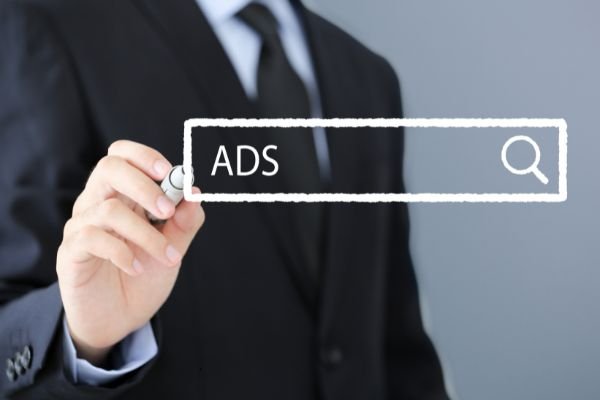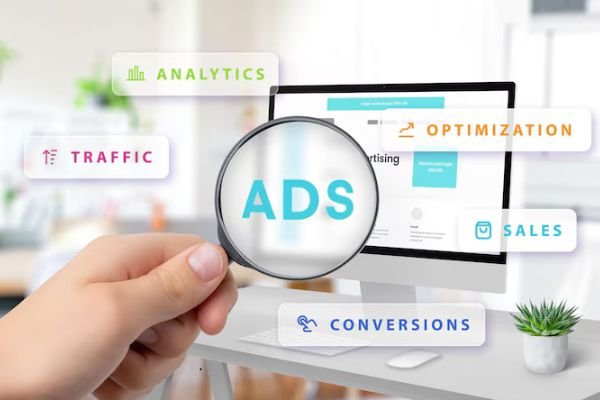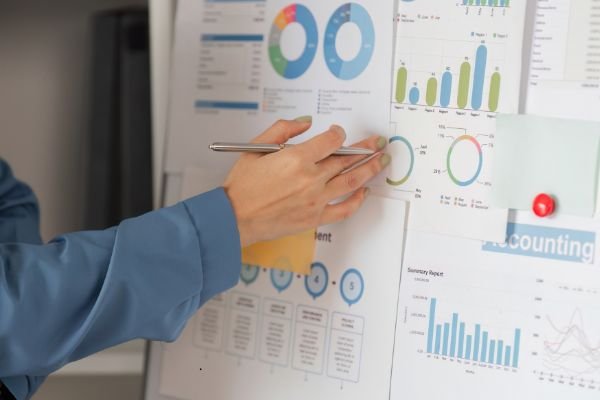Google Ads Strategy: A Complete Guide For Maximum ROI
A winning Google Ads strategy in 2025 means understanding new ad tools, audience behavior, and constant campaign optimization for the highest return on investment (ROI).
Many businesses throw money at Google Ads and hope for leads. Last year, a local retailer spent over $10,000 on ads in just three months. They got clicks but very few sales. The owner was frustrated, convinced Google Ads “doesn’t work.” But after an audit, we found a tangle of campaigns, poor targeting, and no real performance tracking. Their story is common—and completely fixable.
Don’t let your business repeat this mistake. Whether you’re starting or scaling, the right strategy combines structure, measurement, and automation. Let’s break down exactly what works in Google Ads for 2025, so your budget delivers results—not just clicks.
Eclipse Marketing offers support for every stage, from setup to ongoing optimization, to ensure your investment pays off.
Table of Contents
- Why Google Ads Still Delivers the Best ROI in 2025
- Core Components of a Modern Google Ads Strategy
- Account Structure for Clarity and Scale
- Keyword Targeting for High-Intent Traffic
- Ad Creative that Converts
- Smarter Bidding and Budgeting for 2025
- Automated Bidding: Set Goals, Not Just Budgets
- Budget Allocation: Focus on Winners
- Measuring Success: The Metrics That Matter Most
- Conversion Tracking: Your First Priority
- Continuous Optimization: Don’t Set and Forget
- Automation and AI: The Future of Google Ads
- Common Mistakes to Avoid (and How to Fix Them)
- How to Get Expert Help and Stay Ahead
- FAQs

Why Google Ads Still Delivers the Best ROI in 2025
Google Ads reaches users with high intent at the right moment. In 2025, it still offers the most direct path to leads and sales online. Google’s search network covers billions of queries a day, giving your ads unmatched reach. Display and video networks let you re-engage audiences across the web and YouTube. No other platform offers this scale, targeting, and flexibility.
But reach alone doesn’t equal results. Many campaigns waste budget because they ignore account structure, miss tracking opportunities, or fail to optimize bids. Google Ads’ algorithms get smarter each year, but so does the competition. To win, you must focus on fundamentals: targeting, ad copy, landing pages, and continuous improvement.
Start with a clear goal for every campaign. Are you driving sales, generating leads, or building brand awareness? Each requires different settings and measurements. Set up conversion tracking early. Without it, you can’t see which keywords or ads actually drive results. In 2025, automation and AI can help, but only if you give them the right data and boundaries.
For more details on new features and support, explore the official Google Ads Help center.

Core Components of a Modern Google Ads Strategy
A complete Google Ads strategy in 2025 covers five pillars: account structure, keyword targeting, ad creative, bidding strategy, and measurement. Here’s how to get each one right.
1. Account Structure for Clarity and Scale
Organize your account by business goals and product lines. Each campaign should target a specific theme or goal—never bundle unrelated products or services together. Use separate ad groups for closely related keywords. This lets you tailor ads, measure performance, and scale successful areas.
Break out branded versus non-branded campaigns. This shows you exactly where your ROI comes from. If you run local services, use location targeting to focus spend. For ecommerce, build out campaigns by product categories or top sellers. Good structure makes optimization simple and avoids wasted budget.
For more on organizing your campaigns for growth, see How to Structure Your Google Ads Account for Scalable Success.
You can also benchmark your campaigns by checking WordStream’s Google Ads Benchmarks to see how your performance compares to your industry averages.
2. Keyword Targeting for High-Intent Traffic
Google Ads thrives on capturing people ready to act. In 2025, focus on a mix of exact, phrase, and broad match keywords. Use negative keywords to cut out low-value searches. Build keyword lists from actual customer questions and pain points, not just guesswork.
Don’t “set and forget.” Use Search Terms reports to see what users really type, then refine your keyword lists every month. In competitive industries, prioritize long-tail keywords with clear intent—they’re cheaper and often convert better. Layer in audience segments, like past website visitors, to sharpen your targeting further.
3. Ad Creative that Converts
In 2025, Google’s responsive search ads can auto-test headlines and descriptions, but you need strong copy to start. Focus on benefits, not features. Every ad should answer: Why should someone choose you right now?
Include your main offer or unique selling point. Use ad extensions to show pricing, reviews, or extra links to your best pages. Test new ad copy every quarter—what worked last year may not resonate today.
For a practical guide on paid search best practices, see HubSpot’s Paid Search Tips.

Smarter Bidding and Budgeting for 2025
Bidding has changed a lot in recent years. Manual bids are fading out. In 2025, smart bidding strategies powered by AI give you better results—if you use them right.
Automated Bidding: Set Goals, Not Just Budgets
Google offers automated bidding options like Target CPA, Target ROAS, and Maximize Conversions. Choose based on your business goal. For lead generation, Target CPA is popular. For ecommerce, Target ROAS works well if you have enough conversion data.
Start by running campaigns with “Maximize Conversions” to gather data, then switch to a more specific target. Let Google’s system adjust your bids in real time based on device, location, time, and user signals you could never track manually. But always monitor performance—algorithms aren’t perfect.
For expert reviews on trends and strategies, check Search Engine Land’s coverage on Google Ads.
Budget Allocation: Focus on Winners
Split your budget by campaign performance, not just gut feeling. If some campaigns or keywords have much higher cost per conversion, shift spend to what’s working best. Pause or fix underperformers. Use campaign experiments to test new bidding strategies or landing pages without risking your whole budget.
Explore more on this topic in Advanced Bidding Strategies for Google Ads in 2025.

Measuring Success: The Metrics That Matter Most
Data is at the heart of every strong Google Ads strategy. But with so many metrics, it’s easy to get lost. In 2025, focus on the numbers that directly tie to your bottom line.
Conversion Tracking: Your First Priority
Set up conversion tracking from day one. Use Google Tag Manager or direct tag placement to track actions like purchases, form submissions, or phone calls. If you skip this step, you’re flying blind. Tie every campaign and keyword back to real business results, not just clicks or impressions.
For a deep dive into paid search measurement, read Moz’s Guide to PPC.
Key Metrics to Watch
- Cost per Conversion (CPC): The true price you pay for a lead or sale.
- Conversion Rate: What percentage of clicks turn into customers?
- Return on Ad Spend (ROAS): Revenue for every dollar spent on ads.
- Impression Share: How often your ads show compared to competitors.
Ignore “vanity” metrics like total clicks or impressions unless they connect to conversions. Review performance weekly and set clear benchmarks for success.
Continuous Optimization: Don’t Set and Forget
The best Google Ads accounts change constantly. Run A/B tests on ads and landing pages. Pause underperforming keywords or raise bids on top converters. If your numbers dip, look for bigger market changes—seasonality, new competitors, or shifting search trends. Adjust quickly.
For deeper help, Eclipse Marketing’s Google Ads experts can handle audits and ongoing optimization.
Automation and AI: The Future of Google Ads
AI and automation are transforming Google Ads in 2025. They save you time, spot patterns humans miss, and drive better results—if you use them smartly.
Automate the Mundane, Focus on Strategy
Use Google Ads Scripts or built-in automation to handle routine tasks. Automate budget adjustments, pausing low-converting ads, or flagging keyword issues. This frees you to work on strategy, ad creative, and high-level optimizations.
Set up automated rules with clear limits. For example, pause ads with zero conversions after 200 clicks. Use automated insights to spot trends, but always review big changes yourself.
AI-Powered Audiences and Creative
In 2025, Google uses AI to build “predictive” audiences—people likely to convert based on your data. Use these to reach users before they search for your product. Test Performance Max campaigns, which auto-allocate budget across search, display, video, and shopping for best ROI.
AI also helps improve ad copy, suggest bidding tweaks, and optimize targeting. But the best results come from combining automation with expert oversight.
For the latest tactics, reach out through our contact page for a custom strategy session.
Common Mistakes to Avoid (and How to Fix Them)
Even experienced advertisers can slip up. Here are the top mistakes we see in 2025—and how to avoid them.
- Poor Account Structure: Mixing too many goals or products in one campaign.
- No Conversion Tracking: Guessing which ads work instead of knowing.
- Ignoring Negative Keywords: Paying for irrelevant clicks that never convert.
- Over-reliance on Automation: Trust but verify—always check AI-driven changes.
- No Ongoing Optimization: Google Ads isn’t “set and forget.” Review weekly.
Fixing these issues can double or triple your ROI fast. Use audits, reports, and regular reviews to catch problems early.
For more in-depth advice, check out our SEO services for holistic growth.
How to Get Expert Help and Stay Ahead
Google Ads changes fast. New features, changing rules, and rising costs make it hard to keep up. The most successful advertisers get expert support to stay ahead.
Professional agencies offer audits, campaign setup, management, and training. They spot waste, unlock new opportunities, and make sure your budget gets the highest possible ROI. Whether you’re running ads yourself or want full management, getting help pays off.
For local businesses, working with a Denver SEO agency that understands your market can make a huge difference.
FAQs
What’s the biggest change in Google Ads for 2025?
AI and automation are more important than ever. They help optimize bids and target the right audiences.
How much should I spend on Google Ads?
Start with a budget you can track and adjust based on performance. Focus spend on what drives real results.
Do I need to use all Google Ads campaign types?
No. Choose types that match your goals—search, display, video, or shopping. Start with one and expand as you grow.
How soon will I see results?
Most businesses see results within a few weeks, but full optimization takes 60–90 days.
Should I manage Google Ads myself or hire an expert?
If you have the time and skills, self-management is possible. But expert help can maximize ROI and avoid common mistakes.

Mike has over 5 years of experience helping clients improve their business visibility on Google. He combines his love for teaching with his entrepreneurial spirit to develop innovative marketing strategies. Inspired by the big AI wave of 2023, Mike now focuses on staying updated with the latest AI tools and techniques. He is committed to using these advancements to deliver great results for his clients, keeping them ahead in the competitive online market.
